#viii o'keeffe
Explore tagged Tumblr posts
Text

I drew the Vespers on stream as the will appear in Amour'd Core, and managed to polish up I-IV. V-VIII coming soon to a post near you!
#armored core#armored core vi#armored core 6#amour'd core#dating sim#mecha#character design#vii snail#vi freud#viii o'keeffe#v iv rusty#fan art#fan game
81 notes
·
View notes
Text

Pre divorce O'Keffee and Flatwell except Flatwell is misusing disguise funds
#my art#digital art#viii o'keeffe#middle flatwell#ac 6#rusty's divorced spy dads#idk what else to tag#this isn't anywhere near the realm of canon but who cares#anyway they're hot and crazy and definitely smashing
191 notes
·
View notes
Text

The galaxy's most subtle ship art. Flatwell and O'Keeffe have rotted my brain.
#armored core 6#armored core#armored core vi#armored core fires of rubicon#armoredcore#fires of rubicon#ac6#acvi#flatwell#middle flatwell#viii o'keeffe#okeeffe#viii okeeffe#v.iii o'keeffe#v.iii okeeffe#american traditional#traditional#amtrad#trad#vegasart
47 notes
·
View notes
Text
Pater being like the baby/lil bro of the group, on account Hawkins calls him "son" as a term of endearment and he also mentions O'Keeffe helped him out.


But Pater is also like "if one of you dies, I get a promotion!"

#v.viii pater#v.v hawkins#v.iii o'keeffe#armored core 6#armored core vi#v viii pater#v v hawkins#v iii o'keeffe
25 notes
·
View notes
Text
— Les réservations de fc
Les avatars réservés.
Aaron Taylor Johnson | avya
Anya Chalotra | Bittrblue
Anya Taylor-Joy | saskia
Arnas Fedaravicius | ovniix
Barbara Palvin | Puissante
Charlie hunnam | Eden
Dev Patel | _vox
Emma D’Arcy | mc.mads
Garrett Hedlund | noqt.
Henry Cavil | The Man
Kit Harington | sleipnir.
Lee Pace | La Fauvette
Lucas Lynggaard Tønnesen | Milouri
Mads Mikkelsen - joursetranges
Matt Smith - ravages
Medalion Rahimi | rage
Millie Brady | penthésilée
Morfyd Clark - Chewi
Natasha O'Keeffe | gorgon's playground
Paul Cless | Iskaras
Rebecca Ferguson | rattlesnake
Sobhita Dhulipala | dionysass
Sofia Boutella | Ahziel
Tamika Fawcett | Granger
Thomas Doherty - MEMORY CARD VIII
n'hésitez pas à pré-réserver vos fc ! rejoignez nous sur discord !
https://discord.gg/fnvdmkEbG5
#baldur's gate 3#forum rpg#forumactif#forumrpg#french rpg#projet forum#rpg french#rpg#the witcher#rpg francophone
12 notes
·
View notes
Text




Natasha O'Keeffe ( cr. MEMORY CARD VIII ou MCVIII ) + one.
#Natasha O'Keeffe#natasha o'keeffe avatars#avatars rpg#forum rpg#request#faceclaim#faceclaim rpg#400640#avatars 400*640
69 notes
·
View notes
Photo










i. summer days ii. calla lilies iii. flower abstraction iv. from pink shell v. hibiscus vi. the red maple at lake george vii. lake george viii. new york street with moon ix. from the lake x. the barns, lake george
“It's my private mountain. It belongs to me. God told me if I painted it enough, I could have it.”
Georgia O'Keeffe (American, 1887-1986)
#georgia o'keeffe#painting#art#oil painting#female artists#nature#flowers#landscape#mountain#god#new york#abstract#moon
29 notes
·
View notes
Text
READ PDF Artists Their Lives and Works [Ebook]^^
PDF Artists: Their Lives and Works [Ebook]^^
Artists: Their Lives and Works

[PDF] Download Artists: Their Lives and Works Ebook | READ ONLINE
Author : Ross King Publisher : DK Publishing (Dorling Kindersley) ISBN : 1465463283 Publication Date : 2017-9-5 Language : eng Pages : 360
To Download or Read this book, click link below:
http://read.ebookcollection.space/?book=1465463283
READ PDF EBOOK
Synopsis : PDF Artists: Their Lives and Works [Ebook]^^
Extraordinary reference book of over 80 famous painters, their lives, their loves and their iconic paintings.This art book includes insightful biographies of artists accompanied with remarkable reproductions of their famous artworks. Begin with the early Renaissance and follow art movements through the centuries to some of the most well-known artists alive today.A gorgeous exploration of the defining people of the art world including pioneers like Giotto and Jan van Eyck, the greats like Leonardo da Vinci and Raphael, and the visionaries like Frida Kahlo and Hokusai.The large format art book is overflowing with information and pictures of your favorite classics. The full-page prints are especially spectacular, allowing you to get the full effect of the work that inspired, defined and encapsulated art movements.Over 500 years of the craft is discussed, with the chapters organized by century starting with Before 1500' and ending with '1945 - Present.' Each chapter features the relevant painters of those years with its own directory. Read about the historical context of art movements in sections which include timelines and fact panels giving incredible insight into the art world, the past lives of artists and their visions and techniques.Discover the unconventional stories of the artists' lives, including their influences, developments, friendships, loves and rivalries. Read about the portraits that Holbein did for Henry VIII to play matchmaker, Caravaggio's astonishing reaction to a badly cooked artichoke and the many romantic affairs of Picasso. Sometimes scandalous and often tumultuous, the lives of artists like Raphael, Hogarth, van Gogh, O'Keeffe, Magritte, Warhol and Kiefer are as interesting and captivating as their work.The Artists Behind the Paint BrushesA beautiful coffee table book that would make a lovely gift for those interested in art history and artist biographies, or to browse the attractive reproductions of the famous artworks. Includes a foreword by Ross King, who is the author of the bestselling Brunelleschi's Dome and Michelangelo and the Pope's Ceiling, as well as the novels Ex-Libris and Domino.- Over 80 biographies of the standout artists over the centuries since the early Renaissance.- Beautiful reproductions of artworks that allow you to get up close to their brush strokes.- Insight into historical art themes and movements that influenced the periods.
0 notes
Photo

Paintings vlog ymutate: Georgia O'Keeffe In the Patio VIII (1950) via Tumblr
1 note
·
View note
Text
The Vespers
Every Vesper as they will appear in Amour'd Core. Shout out to everyone who came to the stream! Designing each character has been a labor of love.

#fan art#amour'd core#armored core#armored core 6#character design#mecha#vi freud#vii snail#viii o'keeffe#viv rusty#ac6 rusty#vv hawkins#Vvi maeterlinck#Vvii swinburne#Vviii pater
82 notes
·
View notes
Text


The Divorce™
#my art#digital art#ayre armored core#armored core 6#ac6#middle flatwell#viii o'keeffe#idk what else to tag#rusty's divorced spy dads
76 notes
·
View notes
Text
The Midheaven: How You Will Be Remembered
The Midheaven (MC) is commonly thought to describe one’s career path. Although this is a decent indicator of one’s overall path, it can be hard to relate to a specific career so early in one’s life. So, if you don’t relate to your Midheaven like, “Oh, you have a MC in Aries, so you’re probably going to be a police officer, solider, or athlete" then maybe try thinking of the Midheaven as how you will be remembered or what you are generally associated with. (Always trust your dominant sign to describe you the most- *a post similar to this coming soon) ✨No matter what career you decide, you will be remembered by your peers, co-workers, friends, and family by traits from the sign, aspects*, and planets* bestowed upon your 10th House.✨
♈ Aries MC: will be remembered for their courage, boldness, intimidating/unsettling nature, and/or originality. (ex. Stephen King, Meryl Streep, Kanye West, Joan of Arc, Bill Gates, Angelina Jolie, Madalyn Murry O'Hair, Pablo Picasso, Rachel Maddow, Will Smith, Franz Kafka, Tyra Banks, Aleister Crowley, Tina Fey, Francisco de Goya, Julia Roberts, Chris Farley, Joseph Goebbels, Marvin Gaye, Iggy Pop, Kate Moss, Alfred Hitchcock, George Wallace, Hank Williams, Ayn Rand, Rob Zombie, Alexandre Dumas, John Steinbeck, Anne Frank, Twiggy, Jack Black, William Blake, Celine Dion, Galileo Galilei, Al Gore, Emmylou Harris, Las Vegas-Nevada, Manhattan-New York)
♉ Taurus MC: will be remembered for their extravagant style or possessions, their values, and/or “diva” attitude. (ex. Henry VIII, Andy Warhol, Marilyn Monroe, Tina Turner, Pope Francis, Jackie Robinson, Selena Gomez, Drake, Donald Trump, Freddie Mercury, Agatha Christie, Muhammad Ali, Frida Kahlo, O. J. Simpson, Justin Timberlake, Marlene Dietrich, Malala Yousafzai, Christopher Columbus, Michael Bay, Luciano Pavarotti, Nicole Richie, Woody Allen, Marilyn Manson, Maya Angelou, Martin Scorsese, Bernie Madoff, Ringo, Josephine Baker, Andrew Lloyd Webber, Sarah Palin, Josh Groban, Chris Brown, Mary Kate & Ashley Olsen, Norway)
♊ Gemini MC: will be remembered for/through words (writing, phrase, acting, thoughts, speech), their cleverness, and/or mental/emotional detachment. (ex. Jean-Jaques Rousseau, Albert Camus, Madonna, J.R.R. Tolkein, Donna Summer, Wolfgang Amadeus Mozart, Chelsea Handler, Alex Trebek, Kurt Cobain, Julie Andrews, Oscar Wilde, Jay-Z, Richard Nixon, Harriet Beecher Stowe, Tom Hanks, Kris Jenner, Walt Disney, Miss Cleo, Mark Zuckerberg, Steve Jobs, Hugh Hefner, Lizzie Borden, Jane Austen, Charles Dickens, Kathy Bates, Winston Churchill, Melissa Ethridge, Ernest Hemingway, Margaret Mitchell, Paul Simon, Greece, Tokyo-Japan)
♋ Cancer MC: will be remembered for their emotional impact, sensitivity, and/or parental care/control. (ex. Beyoncé, Matamha Gandhi, John F. Kennedy, Venus Williams, Britney Spears, Arthur Rimbaud, Elizabeth Warren, Denzel Washington, Jeffery Dahmer, Sun Yet-sen, Bob Hope, Stevie Wonder, Anderson Cooper, Cat Stevens, Anna Nicole Smith, Joe Jonas, Rock Hudson, Alice Cooper, Woodrow Wilson, Barbara Walters, T. S. Elliot, Coretta Scott King, Albert Schweitzer, Ted Cruz, Monica Lewinsky, H.P. Lovecraft, Anaïs Nin, Katie Couric, Ralph Waldo Emerson, Carole King, Neil Diamond, Harper Lee, Giacomo Puccini, Sidney Poitier, September 11 attacks, United Kingdom)
♌ Leo MC: will be remembered for their theatrics, arrogance/vanity, power, and/or regality. (ex. Grace Kelly, Prince, Isaac Newton, Adolf Hitler, Katy Perry, Charlie Chaplin, Aretha Franklin, Sigmund Freud, Jacqueline Onassis-Kennedy, Stanley Kubrick, Courtney Love, Mark Twain, Chaka Khan, Napoleon Bonaparte, Kathy Griffin, Jim Carrey, Alfred Nobel, Eric Clapton, Annie Oakley, Martha Stewart, Divine, Louis Pasteur, Robin Williams, Ludwig Van Beethoven, Chuck Berry, Vladimir Putin, Clint Eastwood, Missy Elliot, Frank Sinatra, Mel B, Edgar Allan Poe, Los Angeles-CA)
♍ Virgo MC: will be remembered for their scandals/controversy, never-ending toil, physicality/health and/or attention to detail. (ex. Hillary Clinton, Bruce Lee, Kim Kardashian, Ellen DeGeneres, Brad Pitt, Nelson Mandela, Bette Davis, Justin Bieber, Elvis Presley, Erykah Badu, Jimmy Page, Eartha Kitt, Leonardo de Vinci, Bob Marley, Joan Crawford, Margaret Thatcher, Eminem, Friedrich Nietzsche, David Lynch, Chaz Bono, Marlon Brando, Björk, Ozzy Osborne, Emily Brontë, Bernie Sanders, Georgia O'Keeffe, Diana Ross, Kahlil Gibran, Russia, United States)
♎ Libra MC: will be remembered for their inner/outer beauty, adaptability, and/or desire for or appearance of stability. (ex. Elton John, Jane Goodall, Malcolm X, Coco Channel, Kylie Jenner, Ronald Reagan, Princess Diana, Michelangelo, Oprah Winfrey, Bob Dylan, Winona Ryder, Jimi Hendrix, Mother Teresa, Elizabeth Taylor, Cristiano Ronaldo, Angela Merkel, Tom Brokaw, Alan Watts, Charles Darwin, Brigitte Bardot, Patti Smith, Chuck Norris, Linda Lovelace, Ray Charles, Lionel Messi, Eleanor Roosevelt, Lewis Carroll, Noam Chomsky, Lucille Ball, Venice-Italy)
♏ Scorpio MC: will be remembered for their physical attractiveness, taboo activities/topics, and/or natural talent. (ex. James Joyce, Billie Holiday, Taylor Swift, Barack Obama, Carrie Fisher, Jim Morrison, Selena, F. Scott Fitzgerald, Queen Elizabeth II, Ariana Grande, Marie Curie, Anthony Hopkins, René Descartes, Nina Simone, Willem Dafoe, Paul Newman, Mariska Hargitay, Thomas Jefferson, Ray Bradbury, Joseph Stalin, Larry King, Duke Ellington, Joan Jett, Buddy Holly, Megan Fox, Johnny Knoxville, Daniel Day-Lewis, Gwen Stefani, Francis Ford Coppola, Sophia Loren, Marcus Aurelius, China)
♐ Sagittarius MC: will be remembered for their joviality, reckless/wild free spirit, sense of humor, and/or philosophy/spirituality. (ex. Al Capone, Deepok Chopra, Shia LaBeouf, Audrey Hepburn, Harvey Milk, Johnny Cash, David Bowie, Bettie Page, Pablo Neruda, J. K. Rowling, Christina Aguilera, Michael Jackson, Henry David Thoreau, Adele, Janis Joplin, Maximilien Robespierre, Ellen Pompeo, Whitney Houston, Paul McCartney, Evel Knievel, Bruno Mars, Jimmy Fallon, Peggy Lipton, Karl Marx, George Takei, Ryan Gosling, Whoopi Goldberg, Vincent Price, Rio de Janeiro-Brazil)
♑ Capricorn MC: will be remembered for their accomplishments/legacy, conquering of odds, and/or persistence. (ex. Martin Luther King Jr., George Washington, Rihanna, Isadora Duncan, Benjamin Franklin, James Dean, Nikola Tesla, John D. Rockefeller, Serena Williams, Joan Baez, Snoop Dogg, Alexander the Great, Barbara Streisand, Ron Howard, Stevie Nicks, Bette Midler, Joan Rivers, Immanuel Kant, Queen Latifah, Johann Sebastian Bach, Walt Whitman, Che Guevara, Liza Minnelli, Amelia Earhart, Mariah Carey, John Lennon, George Lucas, Donatella Versace, Louis Armstrong, Pakistan)
♒ Aquarius MC: will be remembered for their rebellious nature, involvement in a social organization/group, and/or unpredictability. (ex. Miley Cyrus, Tim Burton, Voltaire, Mick Jagger, Carl Sagan, Rita Hayworth, Neil Armstrong, Amy Winehouse, Pamela Anderson, Carlos Santana, Edward Snowden, Leo Tolstoy, Mae West, Orson Welles, Charlie Sheen, Eva Peron, Miles Davis, Bruce Springsteen, Johann Kepler, Suddam Hussein, Ruby Rose, Gerard Way, Helen Mirren, Howard Stern, Arthur Conan Doyle, Mary Shelley, George R. R. Martin, Kristen Stewart, Jean Piaget, Ronda Rousey, Willow Smith, Florida, India)
♓ Pisces MC: will be remembered for their delusional optimism, supernatural success, and/or they are often idolized. (ex. Vincent Van Gogh, Albert Einstein, Irene Cara, Cher, Salvador Dalí, William Shakespeare, Edie Sedgwick, Fidel Castro, Lady Gaga, Dalai Lama XIV, Steven Spielberg, George Michael, Marie Antoinette, RuPaul, Judy Garland, Michael Phelps, Sally Ride, John Cena, William Faulkner, Victoria Beckham, Lee Harvey Oswald, Douglas Adams, Jean Renoir, Buzz Aldrin, Arnold Schwarzenegger, Farrah Fawcett, Osama bin Laden, Sam Cooke, Michael Jordan, Switzerland, North Korea)
#midheaven#astrology#birth chart#natal chart#celebrity#10th house#traits#mine#career#mc#aries midheaven#taurus midheaven#gemini midheaven#cancer midheaven#leo midheaven#virgo midheaven#libra midheaven#scorpio midheaven#sagittarius midheaven#capricorn midheaven#aquarius midheaven#pisces midheaven
6K notes
·
View notes
Text
La fotografia come forma d’arte (quarta parte)
di Lorenzo Ranzato
I territori del “fotografico”: pittorialismo, documentarismo, concettualismo
Il riconoscimento della fotografia pittorialista come forma d’arte
La rapida carrellata storica che abbiamo compiuto, a partire dalla seconda metà dell’Ottocento sino alla chiusura della rivista Camera Work nel 1917, ci ha consentito di tracciare una panoramica del pittorialismo europeo e statunitense, ma soprattutto di conoscere metodi e stili di alcuni dei suoi più autorevoli rappresentanti, i cosiddetti artisti-fotografi. In questo modo, abbiamo potuto comprendere come il pittorialismo sia stato non solo “un’insieme piuttosto eterogeneo di idee su ciò che rende buona una fotografia d’arte”[i], ma sia diventato anche il primo vasto movimento fotografico internazionale, che si è guadagnato un proprio spazio di autonomia fra le arti maggiori.
A questo successo hanno contribuito senza dubbio le esperienze dei pittorialisti europei, ma un impulso determinante è stato dato dal movimento Photo-Secession (Edward Steichen, Clearence White, Käsebier, Frank Eugene, F. Holland Day e Alvin Langdon Coburn) e soprattutto dal loro più autorevole rappresentante, Alfred Stieglitz. Lo stanno a confermare le iniziative portate avanti dallo stesso Stieglitz, sia con la pubblicazione di Camera Work, sia con le diverse mostre realizzate, fra le quali spicca l’International Exhibition of Pictorial photography tenuta a Buffalo nel 1910, che segna il punto più alto dell’esperienza pittorialista europea e statunitense.
Negli anni successivi alla mostra di Buffalo il movimento Photo-Secession perde coesione, anche a causa dei modi autoritari di Stieglitz e - complice anche l’avvento della Prima Guerra Mondiale - conclude la sua parabola nel 1917, quando Stieglitz scioglie il movimento e chiude la rivista Camera Work.
Purismo fotografico vs. pittorialismo
Il riconoscimento artistico della fotografia pittorialista rappresenta indubbiamente il più grande risultato ottenuto da Stieglitz e dal suo gruppo, ma all’interno di questo variegato movimento internazionale restano ancora molte questioni aperte, che ruotano prevalentemente attorno all’irrisolto rapporto fra pittura e fotografia, che ora bisognerà nuovamente affrontare.
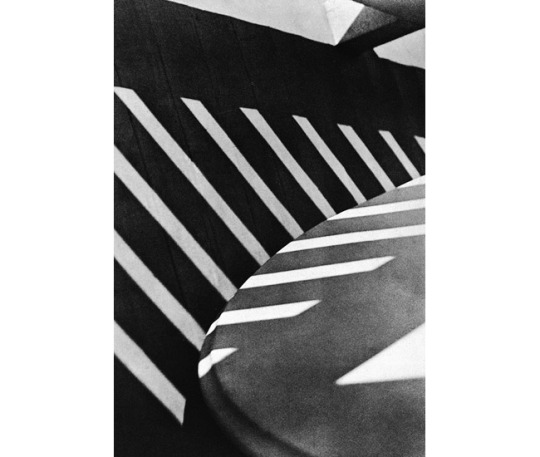
Paul Strand, Astraction-porch shadows, Connecticut, 1916
Dobbiamo fare riferimento ancora alla figura di Stieglitz che, attratto dal nuovo linguaggio fotografico di Paul Strand che incarna i nuovi principi della “fotografia pura”, pubblica le sue fotografie negli ultimi due numeri di Camera Work: nelle opere di Strand vede “una versione fotografica dell’astrazione pittorica” tipica dei dipinti di Picasso e che ora ritrova “nella sua prima passione, la fotografia”[ii]. Non dimentichiamo che sarà lo stesso Stieglitz a ospitare e a far conoscere le nuove tendenze dell’avanguardia artistica europea proprio a New York presso la Galleria 291, con mostre dedicate a Matisse, Cézanne, Picasso, Rodin.
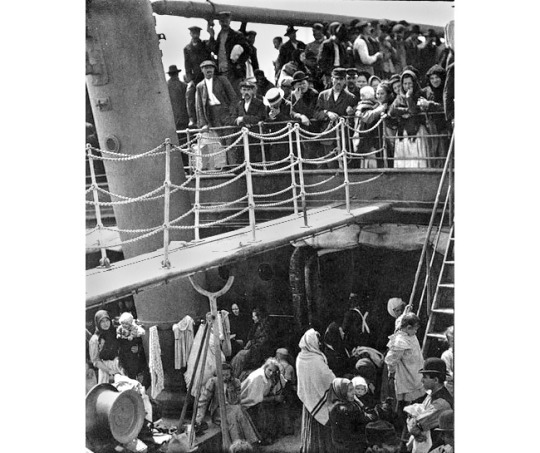
Alfred Stieglitz, The Steerage, Il ponte di terza classe, 1907-1911
Già da queste brevi considerazioni, possiamo intuire come nei primi decenni del Novecento si radicalizzi una nuova contrapposizione fra linguaggi fotografici che - come ci racconta Luigi Marra nel suo libro, più volte citato Fotografia e pittura nel Novecento (e oltre) - sembrano apparentemente diversi: da un lato il purismo della cosiddetta “fotografia diretta” (straight photography), dall’altro il consolidato filone del pittorialismo fotografico, che in diversi modi continua a imitare la pittura impressionista.
Per rappresentare questo cambiamento di linguaggio inaugurato da Strand, si ricorre anche alla fotografia più emblematica di Stieglitz, La terza classe, considerata da molti critici il punto di passaggio “da uno stile pittorico a uno stile documentaristico”[iii]: è un unico scatto realizzato durante la traversata verso l’Europa, con una portatile Auto Graflex nel 1907, ma viene pubblicato su Camera Work solo nel 1911, quando Alfred è del tutto convinto che questa fotografia sia la sua prima opera modernista.
L’equivoco della contrapposizione tra pittorialismo fotografico e straight photography
In realtà, se seguiamo il ragionamento di Marra, il passaggio dal pittorialismo alle fotografia diretta (o purismo fotografico), considerato da molti critici come l’affrancamento della fotografia dalla pittura è una questione mal posta. In effetti, “sotto le apparenze di un rinnovamento linguistico capace di far emergere la tanto invocata specificità fotografica” sembrano emergere ancora forme di “un pittoricismo ben più potente e subdolo”[iv].
Ma dove sta l’equivoco?
Marra sostiene che ci troviamo di fronte a un evidente “errore metodologico”: “si è attribuita una categoria generale (il pittorialismo, cioè l’essere simile alla pittura) a una particolare interpretazione della pittura, l’Impressionismo appunto”, nella convinzione che la fotografia pittorialista sia stata un fenomeno circoscritto soltanto ai due o tre decenni a cavallo tra Ottocento e Novecento. Questo “limite temporale ma soprattutto stilistico indurrebbe a credere che “la fotografia possa essere definita pittorica solo quando imita l’Impressionismo e non altre scuole” [v].
Seguendo l’interpretazione critica di David Bate, che abbiamo già brevemente illustrato nella prima puntata, appare del tutto evidente che il pittorialismo, assieme al documentarismo e al concettualismo, siano le tre categorie del fotografico[vi] “entro le quali racchiudere i comportamenti della fotografia nel tempo e fino alla contemporaneità”[vii], comportamenti che assumeranno di volta in volta una propria specificità linguistica e poetica.
Ne consegue che “il pittorialismo fotografico non è un fenomeno limitabile a un determinato periodo storico e a una particolare scuola”, ma si ripresenta ogni volta che “la fotografia segue la logica complessiva della pittura”[viii].
Possiamo dunque riconoscere nel linguaggio della straight photography nuove forme di pittorialismo fotografico, che ovviamente si distinguono dalle più tradizionali soluzioni proposte dal “pittorialismo storico”, ispirato dall’accademismo e basato sui metodi di manipolazione dell’immagine (due nomi per tutti: l’inglese Robinson e il francese Demachy).

Paul Strand, Vedute di New York, 1915 e 1916
Sotto questo profilo, esemplare è l’opera di Paul Strand che, alla ricerca di un’autonomia della fotografia, rifiuta il linguaggio del pittorialismo storico e disprezza i cosiddetti “fotopittori”. Ma in questo modo ricade in una nuova forma di “pittorialismo forse inconsapevole ma potentissimo”[ix] che riprende le modalità stilistiche delle avanguardie e risente delle influenze del cubismo e dell’astrattismo. Quando afferma che lo specifico fotografico va identificato con “le forme degli oggetti, le tonalità di colore relative, le strutture e le linee”, in realtà sta descrivendo quello che costituisce “lo specifico trasversale di tutta la pittura”[x], peraltro ancora rintracciabile in molta fotografia contemporanea.
Tutto ciò vale anche per la fotografia di altri autori come ad esempio Clarence White, Coburn e Stieglitz, quando il loro linguaggio fotografico si allontana dal “gusto” impressionista e si avvicina a quello delle nuove correnti artistiche del primo Novecento.
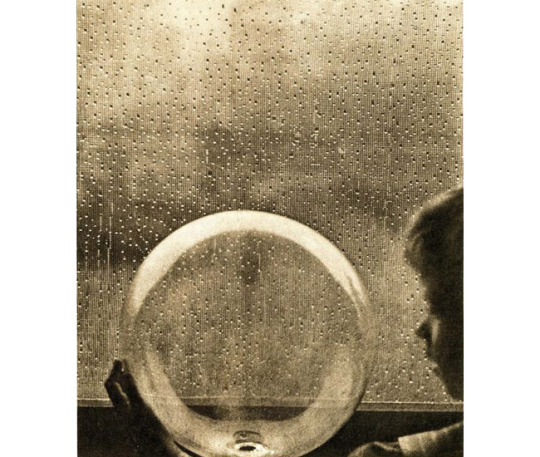
Clarence White, Drop of rain, 1908
Possiamo dunque concludere con Marra che con l’avvento della straight photography il filone pittorialista non si esaurisce, ma piuttosto si aggiorna, con “un passaggio di tutela dall’area impressionista a quella “neoplastica-costruttivista”[xi].
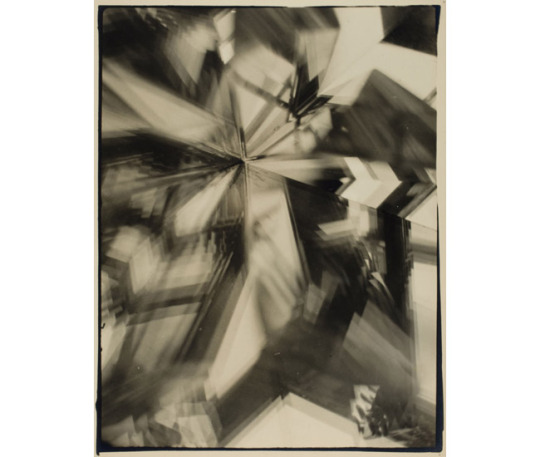
Alvin Langdon Coburn, Vortografia, 1917
Peraltro, il concetto di neopittorialismo introdotto da Marra e anche da Bate, con sfumature diverse, per definire questi nuovi orientamenti fotografici, può diventare un’utile chiave interpretativa, per affinare il nostro “occhio critico”, ogni volta che andremo a indagare tipi di fotografia che in qualche modo fanno uso di linguaggi riconducibili a qualche tendenza pittorica, sia essa figurativa o astratta. Ciò vale ad esempio, per la fotografia astratta di Làslò Moholy-Nagy o per le composizioni alla maniera di Malevič o Modrian della newyorkese Florence Henri – commentate da Marra -, oppure in epoca più vicina a noi, per i tableaux del canadese Jeff Wall – che David Bate accosta a quelli ottocenteschi di Robinson – o infine per le grandi composizioni di David La Chappelle, dalla quali emerge prorompente lo scontro “tra artificio e natura”.

Alfred Stieglitz, Fofografie di Georgia O'Keeffe, 1917-1918
Oltre il pittoricismo: “l’arte del documento” e la fotografia concettuale
Per ricercare l’autonomia della fotografia dalla pittura dovremo esplorare altri territori del “fotografico”, dove si consumerà lo scontro dialettico tra pittoricità ed extrapittoricità[xii]. E le prime avvisaglie di un autentico sforzo antipittorialista potremmo rintracciarle in quel tipo di fotografia che “entra in relazione con le ricerche extrapittoriche sviluppate in area dadaista-surrealista”[xiii].
Ad ogni modo, come afferma Walter Benjamin, a incarnare la nuova forma d’arte dell’epoca moderna è il documento fotografico[xiv], che trova negli album fotografici della Parigi di Eugéne Atget l’esempio storico più significativo. Rilevanti esponenti della fotografia documentaristica saranno i fotografi della Farm Security Administration in America e August Sander ed Henri Cartier-Bresson in Europa, solo per fare alcuni nomi.
L’affrancamento definitivo dalla cultura del pittoricismo avverrà soltanto con l’affermazione della fotografia concettuale[xv], che nascerà sulla scia delle esperienze artistiche del concettualismo: performance, body art, land art, narrative art… Solo allora la fotografia potrà acquisire in modo completo quella specifica identità extrapittorica, che, come sappiamo, trova origine nella poetica del dadaismo e nella teoria del ready-made di Marcel Duchamp[xvi]. A titolo esemplificativo, seguendo le indicazioni di David Bate sul tema dell’assenza della presenza, possiamo ricordare Richard Long e Victor Burgin, o la sequenza Autoseppellimento di Keith Arnatt (1969); oppure, seguendo il racconto di Claudio Marra, l’opera di Francesca Woodman sul tema del corpo, o le opere narrative di Franco Vaccari e Duane Michals “maestro della narrazione pseudotriller di gusto cinematografico”, o ancora i lavori di Cindy Sherman, in bilico tra finzione e realtà, per arrivare alla fotografia italiana del “pensiero debole”, rappresentata da Luigi Ghirri, Gabriele Basilico, Mimmo Jodice e Guido Guidi.
Da questo punto in avanti, grazie anche ai nuovi scenari aperti dalla moda e dalla pubblicità - con la contaminazione fra ricerca artistica e industria culturale -, per il medium fotografico si schiudono nuovi orizzonti, che lo portano ad acquisire progressivamente una rilevante centralità in tutti i processi di produzione artistica contemporanea, sia nelle arti dello “spazio” (pittura, scultura, installazioni), sia nelle arti del “tempo” (video, media digitali e performance)”[xvii].
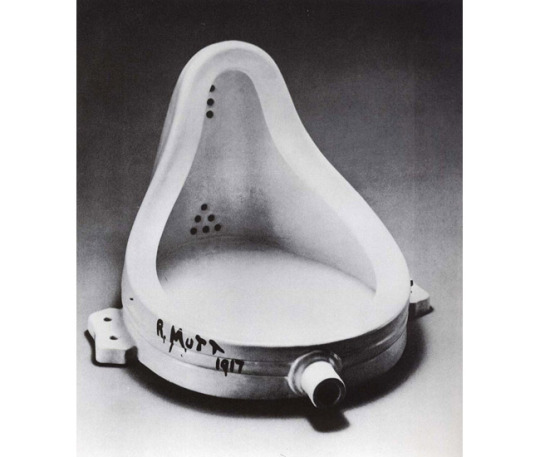
Fontana di Marcel Duchamp, fotografata da Alfred Stieglitz, 1917[xviii]
Dunque, non ci resta che concludere condividendo la tesi di David Bate: riconoscere che è tramontato il tempo della fotografia come arte e pensare piuttosto di essere entrati nella nuova epoca dell’arte come fotografia.
[i] David Bate, La fotografia d’arte, Einaudi, 2018, p.45.
[ii] Alfred Stieglitz, Camera Work-The Complete Photographs 1903-1917, Tachen, 2018, p.213.
[iii] Juliet Hacking (a cura di), Fotografia la storia completa, Atlante, 2013, p.183.
[iv] Claudio Marra, Fotografia e pittura nel Novecento (e oltre), Mondadori, 2012, p.120.
[v] Ivi, p.121.
[vi] David Bate, op. cit. p.9.
[vii] Roberta Valtorta, “Dissimiglianza vs. somiglianza: un concetto in flashback”, in rivista di studi di fotografia rfs, n.8, 2018.
[viii] Claudio Marra, op. cit. p.121.
[ix] Ivi, p.125.
[x] Ibid.
[xi] Ivi, p.131.
[xii] Ivi, p.120 e 122.
[xiii] Ivi, p.131.
[xiv] David Bate, op. cit. p.102. Per una conoscenza più approfondita del documento come forma d’arte, si consiglia la lettura di parte del cap. 3 “L’arte del documento”: pp. 83-112.
[xv] Si veda al proposito la parte iniziale del cap. 4 “Il concettualismo e la fotografia d’arte”, in David Bate, op.cit., e in particolare le pagine dedicate al ready-made Fontana, di Duchamp: pp140-143.
[xvi] Con il ready-made Duchamp attua una rivoluzione epocale, negando l’arte come attività manuale. In altri termini, l’artista non è più tale per l’abilità di manipolare la materia, ma per la capacità di creare nuovi significati.
[xvii] David Bate, op.cit. p.3.
[xviii] Anche in questo caso torniamo a incrociare l’onnipresente Alfred Stieglitz, quando nel 1917 Duchamp scandalizza l’ambiente artistico di New York, proponendo il ready-made Fontana, costituito da un orinale bianco firmato con lo pseudonimo “R. Matt”, che viene rifiutato alla mostra della Società degli artisti indipendenti, ma trova spazio in un’altra mostra organizzata dallo stesso Stieglitz che fotografa l’opera e l’importante riproduzione viene pubblicata sempre nel 1917 sul giornale dadaista The Blind Man. Fontana può essere considerata “un prototipo concettualista” (Bate, op. cit. p.141) ed è l’opera d’arte più dissacrante e influente del XX secolo: la geniale operazione dadaista, che postula il rifiuto dell’arte tradizionalmente intesa, consiste nell’estrapolare dal contesto un oggetto comune - in questo caso l’orinatoio -, che grazie a questa selezione eseguita dall’artista, diventa esso stesso opera d’arte.
0 notes
Text
(E.B.O.O.K. DOWNLOAD^ Artists Their Lives and Works (READ)^
( Artists: Their Lives and Works
Artists: Their Lives and Works

[PDF] Download Artists: Their Lives and Works Ebook | READ ONLINEhttp://read.ebookcollection.space/?book=1465463283
Author : Ross King Publisher : DK Publishing (Dorling Kindersley) ISBN : 1465463283 Publication Date : 2017-9-5 Language : eng Pages : 360
To Download or Read this book, click link below:
http://read.ebookcollection.space/?book=1465463283
!READ NOW!
Synopsis : ( Artists: Their Lives and Works Extraordinary reference book of over 80 famous painters, their lives, their loves and their iconic paintings.This art book includes insightful biographies of artists accompanied with remarkable reproductions of their famous artworks. Begin with the early Renaissance and follow art movements through the centuries to some of the most well-known artists alive today.A gorgeous exploration of the defining people of the art world including pioneers like Giotto and Jan van Eyck, the greats like Leonardo da Vinci and Raphael, and the visionaries like Frida Kahlo and Hokusai.The large format art book is overflowing with information and pictures of your favorite classics. The full-page prints are especially spectacular, allowing you to get the full effect of the work that inspired, defined and encapsulated art movements.Over 500 years of the craft is discussed, with the chapters organized by century starting with Before 1500' and ending with '1945 - Present.' Each chapter features the relevant painters of those years with its own directory. Read about the historical context of art movements in sections which include timelines and fact panels giving incredible insight into the art world, the past lives of artists and their visions and techniques.Discover the unconventional stories of the artists' lives, including their influences, developments, friendships, loves and rivalries. Read about the portraits that Holbein did for Henry VIII to play matchmaker, Caravaggio's astonishing reaction to a badly cooked artichoke and the many romantic affairs of Picasso. Sometimes scandalous and often tumultuous, the lives of artists like Raphael, Hogarth, van Gogh, O'Keeffe, Magritte, Warhol and Kiefer are as interesting and captivating as their work.The Artists Behind the Paint BrushesA beautiful coffee table book that would make a lovely gift for those interested in art history and artist biographies, or to browse the attractive reproductions of the famous artworks. Includes a foreword by Ross King, who is the author of the bestselling Brunelleschi's Dome and Michelangelo and the Pope's Ceiling, as well as the novels Ex-Libris and Domino.- Over 80 biographies of the standout artists over the centuries since the early Renaissance.- Beautiful reproductions of artworks that allow you to get up close to their brush strokes.- Insight into historical art themes and movements that influenced the periods.
0 notes

